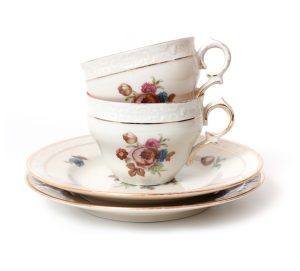Author: Gayle Edwards
Losing a family member is a deeply emotional time. Sadly, we often don’t get a chance to really grieve before we’re plunged into dealing with the necessary paperwork and organising that comes with it.
If you’ve inherited a house full of stuff, you’ve got even more to sort out. However, this is one place where you feel under pressure to get things done, while what you really want to do is slow down.
Your inheritance might be the home you grew up in or of someone you were particularly close to, and it’s important to give yourself time to decide what to do with their belongings, and the property itself.

Bringing in some outside help
There are businesses who can help you empty and sort through the things in your inherited home. But you don’t have to bring in strangers. Don’t be afraid to ask a friend to come along and help you get started, even if that’s removing the everyday items such as toothbrushes, medicines, food from the kitchen and calendars from the wall.
Pick out sentimental items
More than likely there will be particular items that have sentimental meaning to you. Take a box to put these in, and put it aside so that it doesn’t accidentally end up in the wrong pile. Don’t forget to ask family members if there is anything they want to keep as well.
Priority paperwork
There are some things that need sorting sooner rather than later. You’ll need to find and prioritise the important paperwork – bills, bank accounts, insurance and so on. Gather together everything you’ll need, and make a list of the people you need to contact. It may be that bank accounts and financial documents can be passed on to the deceased persons accountant.
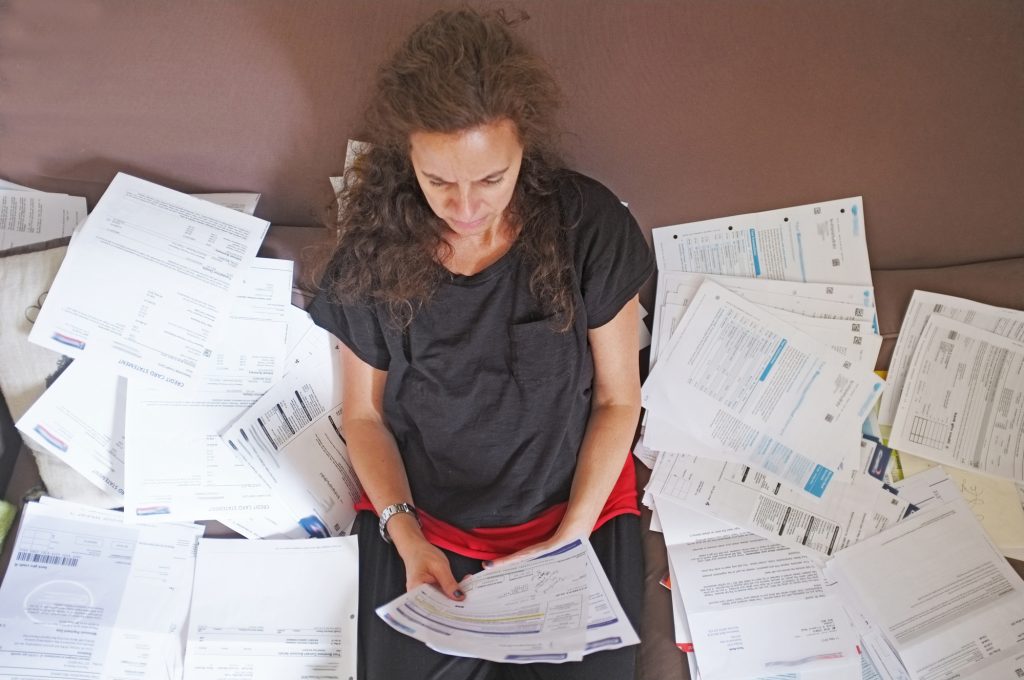
Donate, Sell and Recycle
After the initial burst of organising is over, you’ll be left with a house full of things to sort out. There is no right or wrong way to go about this, but you may find it easier to work room by room, as otherwise the size of the job can become overwhelming.
Sort everything into piles – things to keep, things to donate, items that you can sell and those that need to be recycled or binned.
The kitchen may be one of the easiest rooms to start in. A lot of the items will be less personal and duplicate of those you have at home – cutlery, cooking bowls and mixers. Pick out anything you might want to replace those you have at home, and place the rest for donation.
As you sort through the house you will likely come across items that may be of value. If you don’t know how to price them, then put these aside until you have time to investigate further. Many local auction houses will provide a free valuation and, if you have a sizeable amount of items, the auctioneer will visit the house to give you an overall opinion. It is also possible to email pictures of larger items to them, such as furniture, for an idea of whether auction is the best route.
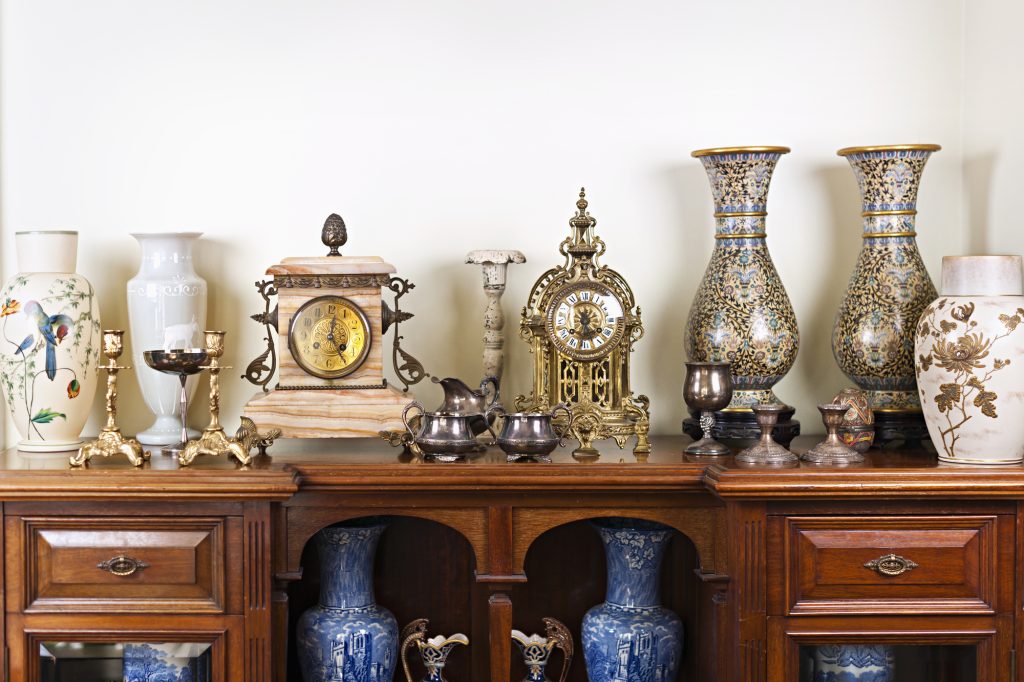
Items you want to keep
Finally, consider the items you would like to keep. There can be practical reasons to keep extra furniture and household items. If you have children that will soon be moving into their own homes they will need beds, sofas and so on to get started, while if you plan to let the house to tenants, you may keep some furnishings.
Some items, furniture in particular, can be hard to get rid of, especially if it’s a larger piece or out of fashion. You might not want it in your own home, but feel reluctant to part with it. You may also have a pile of belongings that you just aren’t ready to part with for sentimental reasons, or want to leave for a while before you tackle them.
Giving yourself time to grieve is perfectly understandable and necessary, rather than making rushed decisions that you later regret. Unfortunately, we often don’t have the luxury of time to deal with a loved one’s belongings, as we need to deal with the property itself.
Placing these items into a self-storage unit is a cost-effective way to keep them safe and dry. You’ll have time to decide what you want to do with them, or until you need them. Meanwhile the property will be empty, and you can decide whether to sell it or keep it on.
If you need help moving your furniture or boxes into storage, please ask us about our free collections service. Our experienced in house team can help collect your items and place them inside your self-storage unit, giving you one less thing to worry about at a difficult time.
You’ve rented your storage unit, you have a van full of much-loved furniture and precious heirlooms – and now you need to put it all in your unit. It sounds simple, but it is worth putting a little forethought into how you use up your space.
Here’s just some of the things you need to consider when you’re unpacking your van.
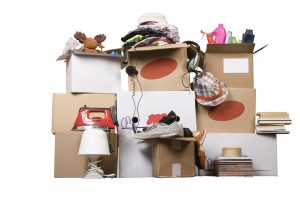
Plan what you’ll need in advance
How you stack your storage until will depend on what you intend to use it for. If your unit is an extra cupboard, a place to keep your Christmas decorations, seasonal sports gear or garden tools, you might want some racking installing to help keep things organised and accessible.
If you do without racking, then put the items you use most frequently towards the front of the unit, to save having to lift everything out of the way each time you want to get in.
If you plan on long term storage of your furniture, plan on putting the heaviest and largest items of furniture in first. That way you can carefully pile smaller boxes and fragile items on top of the furniture, keeping them from being crushed and making the most of your room.
However, customers in the middle of a house move may find it easier to put the largest items of furniture in last. That way, when you open your storage unit they are right at the front, ready to go into the removals van first. If you are moving in a couple of trips, this also means you can get all the furniture into your new home and in place, before returning for your small items.
Take care of your sofa
One of the things we see most often is damage caused to items that are badly stored. You might think that standing your sofa on end in the unit is a great way to make the most of your available space. However, take a look at your sofa arms first. Are they strong enough to take all the weight for a long time?
If you do plan on stacking your sofa on end, wrap the arms in cardboard to protect them from scratches r fabric tears and stains. The space you save in the short term is not worth the cost of damaging your expensive sofa.
Wrap and protect your furniture
Protect the surfaces of your larger items as well. Taping some cardboard onto table tops before you pile your boxes on will help prevent marking.
Make sure you place furniture the right way up. If you stack your table upside down, or lean it against the wall without care, you could end up with scratches that are visible for ever more.
Use some bubble wrap to cover sharp corners. It will stop them being knocked as they are carried from van to unit.

Use strong boxes for smaller items
There’s a tendency to grab any old cardboard box to store our smaller items – often saved from deliveries to our homes. However, using purpose made storage boxes may save you some cracks and breakages.
Large cardboard boxes may not be so strong in the centre, particularly when overfilled with heavy items and stacked in a pile. Using the same sized boxes will also make piling things up a little easier – no balancing unstable pyramids in your unit.
Don’t forget to label your boxes so you know where everything is – and so you can place fragile items at the top of the stack.
Make use of the space
Make sure you make the most of the height of your unit. Careful planning will ensure that boxes can pile up high without falling, and furniture can be stood on top of each other as long as it’s done carefully.
It’s very easy to over or underestimate the space you’ll need for your furniture and boxes. Our team are able to advise you on the size unit you need, so that you are not left with a mass of unneeded floor. A badly packed unit can mean you leave plenty of unused space that you cannot access, and the need to rent a second unit, which could have been avoided.
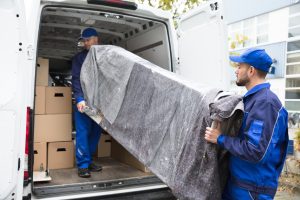
Choose a reputable moving firm
If you choose to use a moving firm, take your time in choosing the right people. Don’t assume they will wrap your furniture before placing it in your unit – it’s best to do it yourself first.
Cost is also not always the most important consideration – if the firm you choose is rushing, they may take less care in placing items in your unit. This means more chance of damage and less care in using the space wisely.
As experts in both furniture storage and removals, our team take great care in moving your belongings from home to unit and back again. If you would like advice, packing materials or to find out about storage unit options, call us today on 0121 250 5055.

You’ve sold your house. Congratulations. Now it’s time to start packing – and there is one room that holds plenty of potential issues. So, follow our tips for getting your kitchen ready to go.
Appliances, knives, glasses, tea sets and dishes – whether it’s granny’s pie dish or a multi accessory blender, you’ll want to take care putting each item into a box to avoid breakages or damage. It’s incredible how much clutter builds up in the kitchen, and how little of it we actually use on a daily basis. So, you’ll need to get plenty of packing materials ready, including bubble wrap, tape and strong boxes.
Packing Appliances
Kitchen cupboards are hiding places for gadgets and small appliances, and all their associated parts. Tipping them all into a large box will just end up with a tangle of leads and unidentifiable pieces.
The best thing to pack them in would be the original boxes, if you have them. If not, a sturdy cardboard box will do. Start by cleaning each appliance thoroughly, especially if you are putting them into storage for a time. You don’t want to open the boxes to find mould.
Tie up power cables with elastic bands or, if possible, tape them to the machine. Wrap glass bowls, and sharp blades, and place all attachments in a plastic bag, alongside the appliance. It takes the guesswork out later.
Plan ahead. There are some gadgets you’ll want straight away – kettle, toaster, coffee machine – so put these all in the same box if you can. Remember to write the contents on the outside of the box, so you can find it easily.
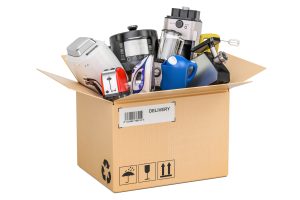
Packing knives and the cutlery drawer
Spoons, ladles, spatulas, graters, mashers, ricers, bottle openers and tongs – we have plenty of utensils. We all know what happens when they tangle together in a drawer, which then refuses to open. It may seem a simple idea to tip the entire pile into a box when packing – but imagine the tangle that will greet you when you try to unpack in your new home.
Take the time to have a bit of a sort out as you pack. Group the utensils together in small amounts, wrap each one in a piece of newspaper and tie an elastic band around the handles to keep them together, and the paper on. This will help stop them tangling, and make unpacking easier.
Knives, of course, need a little more care. You certainly don’t want to tip these into a box. By the time you’ve driven to your new home, carried in all the furniture and started to unpack, you’ll have forgotten about loose knives and put your fingers in danger rooting about in the box.
Put all the knives in a separate group or two, and wrap them in bubble wrap. This will ensure that, even if they move about during the drive, they won’t cut through the wrapping. Label the box clearly so you know which one they are in, and are more wary of sharp edges as you unpack.
Packing glasses and fragile items
Start by picking the sturdiest cardboard box you can find. Sort your glasses so that the drinking glasses go in first. Check each one for cracks and chips – perhaps it’s time to get rid of these, saving yourself some space. Wrap each glass individually, tucking the corners of the paper into the mouth of the glass, and place each one mouth down in the box.
Once you have filled the bottom of the box, place a layer of bubble wrap or paper across the glasses before starting the next row. Then, place the more fragile wineglasses and precious crystal on the top row.
Wine glasses can cause their own issues due to the fragile stem. Protect the stem first by winding bubble wrap around it, until the stem is as wide as the rest of the glass, before wrapping in paper and placing in the box.
Finally, remember to label the box clearly and note which way up it should be carried.
Dinner service and tea sets
We don’t all have delicate china tea sets anymore, but if you have, you risk ornamental handles knocked off, and cracks in the plates. Taking care when you pack will help heirlooms and much loved china travel in one piece.
Teacups, like wine glasses, require a little extra bubble wrap to keep the handles intact. For the most delicate of china, the best thing to use as cushioning is packing peanuts. Pack each item individually, and make sure none are touching each other or the bottom if you can.
Stacking plates in boxes may seem simple, but the weight of the stack will easily cause the bottom plates to crack under pressure. Instead, place a layer of paper between each plate, wrapping a corner over the one above, and then stand the plates in the box on their side. Pack scrunched up paper into any gaps or corners, and your plates will be immobile without being crushed.
It might take time, and a lot of extra paper, to pack up your kitchen carefully, but you’ll appreciate it when you can unpack without damage or breakages.
If you need packing materials, we have strong boxes, tape and all the bubblewrap you need in our box shop.
We love Sutton Coldfield – the vibrant shops, the beautiful parks, the friendly people. Now we are heading into the warmer part of the year, we’re thinking about eating out as well. There are so many lovely restaurants and cafes in Sutton Coldfield that we can’t presume to say these are favourites – but we’ve picked out a few that you told us were great.

The Farmhouse Bistro
If you are thinking of a mooch about in the sunshine, then pop along to Mitchells Craft Centre. There’s a lovely selection of crafty shops and an art gallery to explore, with ceramic painting for the children and interior design ideas for the adults.
After your wander, refresh yourselves with a delicious meal at The Farmhouse Bistro. There’s a children’s menu as well as a selection of cakes, but we’re particularly intrigued by the traditional afternoon tea. That sounds like a treat we all deserve.
Windowbox Café
If you’re out early the Windowbox Café is highly recommended for their hearty breakfasts and perfect poached eggs. A family run café in the high street, it’s a popular choice with a lovely atmosphere. As coffee lovers, we think it would be ideal to stop by with the morning paper for a relaxed weekend cuppa.

Blackroot Bistro
When you have 2,400 acres of National Nature Reserve to explore you need some sustenance. Sutton Park certainly provides, with a choice of cafés and restaurants.
Take the children for a walk through the woodland and around the pools. There’s nothing like fresh air to help you build up an appetite. Then stop in at Blackroot Bistro for a light snack or lunch overlooking the lake with a well-deserved toasted tea cake or beautiful burger.
Millie & Carter
If you are looking for something a little more substantial, or a lovely evening out, then try Millie & Carter, also in Sutton Park. This charming steakhouse overlooks the reservoir, offering wonderful views while you eat. We’d obviously expect the steaks to be particularly special, and from what you’ve said, they don’t disappoint.
The Loft at Buzzards Valley
If you love your wine, or a little G&T, then enjoy a tour of the The Buzzards Valley vineyard. Test a few of the award winning wines and gins made on site and explore the shop for a range of quirky and contemporary gifts.
Then head upstairs to The Loft, a warm and bright bistro with a lovely welcoming atmosphere. The menu offers a full choice of snacks, cakes and meals, all made from locally sourced produce – we can personally recommend the scotch eggs if they’re available – and beautifully presented.
Treat Street
After all that healthy exercise in the park, or wandering through the shops, we think everyone deserves to indulge their sweet tooth a little. With tempting offerings of chocolate covered waffles, fruity crepes and a milkshake made with real ice cream, Treat Street has everything you could want. You can choose a slightly more ‘grown up’ option of cream tea, with your cuppa served in the tea pot of your choice, if you prefer. This is one independent dessert shop that is not just for children.
There’s no doubt Sutton Coldfield and the surrounding areas has a lot of fabulous eating places. We’re clearly spoilt for choice. Let us know where you love to eat out, so we can be sure to try it out soon.
The sun is shining, spring is in the air – and it’s house moving season. This is the time of year we start to see more houses for sale. If you are planning on moving house this year, you’ll want to have your home looking it’s very best for a fast and easy sale.
No doubt you’ve heard that you should fill your home with the smell of baking bread, but if cooking is not your best skill, what else can you do?

First impressions matter
It’s hard to see your home through a stranger’s eyes, but to really see where to start, you need to take a step back. If you can, ask a friend to come over and help.
First impressions count, so take a good look at your home from the outside. Do you have kerb appeal? Is the lawn mown, or are the weeds overgrowing the pathways? A quick touch of paint to the front door and clean windows can make all the difference, turning your home from shabby to welcoming.
A lick of paint
The same applies to the inside of your home. You might love the wall murals, and be so used to the rip in the wallpaper you don’t even notice it anymore, but to a prospective buyer it means decorating and work.
Changing lightbulbs, mending dripping taps and fixing the broken step – all of these minor DIY tasks that you’ve been putting off for years now have to be done.
De-personalise the rooms
A prospective buyer needs to be able to see the space
Have a look at all the stuff that you can live without for a few weeks. Your family photographs, football trophies and CD collection, books and ornaments all make your house your home, but will be very distracting to viewers.
While you’re clearing out the house it’s a great time to sort and pack for your own move. Sort your items into things you can sell, or give to charity. Box up everything else and place it into short term storage units, to keep it safe and dry until you move into your new home.

Make more space
If you do use a storage unit, move some of your extra furniture into it as well. If you can reduce the amount of chairs and tables taking up space in your home, the rooms will look larger, and buyers will be able to visualise their own furniture in place instead.
Garages and sheds often become hoarding places, filled to the brim with bikes, sledges, old toys, lawn mowers, boxes of clutter and so on. If you are taking it all with you, placing this in self-storage will help make your outbuildings look tidier and more welcoming as well.
Make sure everything is gleaming
No matter how house proud you are, every home builds up dirt and dust in the corners. Wipe down the skirting boards, clean the lampshades and wash out the oven. Check every corner for cobwebs and make sure the windows are sparkling to really show off your views.
Not only will your house sparkle, it will smell fresh, a far more inviting scent than last night’s dinner and the dubious odour of pets – who, by the way, should be kept out of the way while viewers are looking round.

Let them relax and enjoy your home
On the day you have viewers coming, open the windows for a bit to let some fresh air in, particularly if you have the heating on so it’s not too warm. Open all the curtains wide to let in the sunshine – and if you want to, get that loaf in the bread maker for a delicious, homely smell.
If you’d like to talk about short term self-storage or our free collections service, helping you to make your house move hassle free, then call us today on 0121 250 5055.

Our warehouse team are quite used to carrying large boxes into storage, but it’s rare we have to actually pack them ourselves. This February we teamed up with EcoMaster to pack something a little different – around 200 bags for The Buddy Bag Foundation – and to find out a little more about the work this fantastic charity does at the same time.

The Buddy Bag Foundation
Imagine that you have to leave your home without warning. You don’t have time to pack – you just go.
As a child this is an incredibly frightening experience, but it happens every day. Hundreds of children are taken into emergency accommodation by a parent, usually the mother, leaving behind everything they own and all sense of security.
The BBF aims to provide a sense of safety and normalcy to these children by providing a few essential items – the things you wouldn’t think about until you didn’t have them – like a clean pair of pyjamas and a toothbrush.

The Buddy Bag Brigade
On 15 February the team from Cookes Storage and our partners from EcoMaster, led by Paul Gresty and Jenny, joined the Buddy Bag Brigade by packing around 200 bags to be sent off to emergency refuge around the country.
The BBF holds bag packing events every month, and everyone is welcome to join in. Not knowing what to expect, we assembled together on a Friday afternoon to have an introduction by BBF founder, Karen Williams. Our bag pack was the 95th – Karen aims to hold the 100th bag pack this year.
What would you need?
It had not really occurred to us before what children might miss when they leave their homes. Friends, yes; but we’d not really thought about the need for a clean pair of underwear or a hairbrush. It might be obvious that younger children need pyjamas, but not that teenagers need deodorant and face wipes so that they can start a new school without having to worry about personal hygiene on top of everything else.

All of these things have been carefully thought of for the Buddy Bags, as well as simple colouring activities to occupy younger children and give mum a rest, books for older children, and a pencil case and basic implements for school children.
Each table in the room was piled high with donated items, split by age. Our teams separated out to pack every bag – a picture frame to record a new memory, a postcard to send back to BBF, and the one vital thing in every bag – a lovely teddy bear for comfort.
Crank up the music
Despite the importance of the work done by the BBF, a bag packing event is a friendly and relaxed day. We cranked up the music and enjoyed a change of pace from the usual working day, plus the chance to spend a bit more time with the team from Ecomaster, furniture and French polishing repair specialists.
Thank you to the BBF for inviting us to join in. We’re sure we’ll team up again for more events soon.

